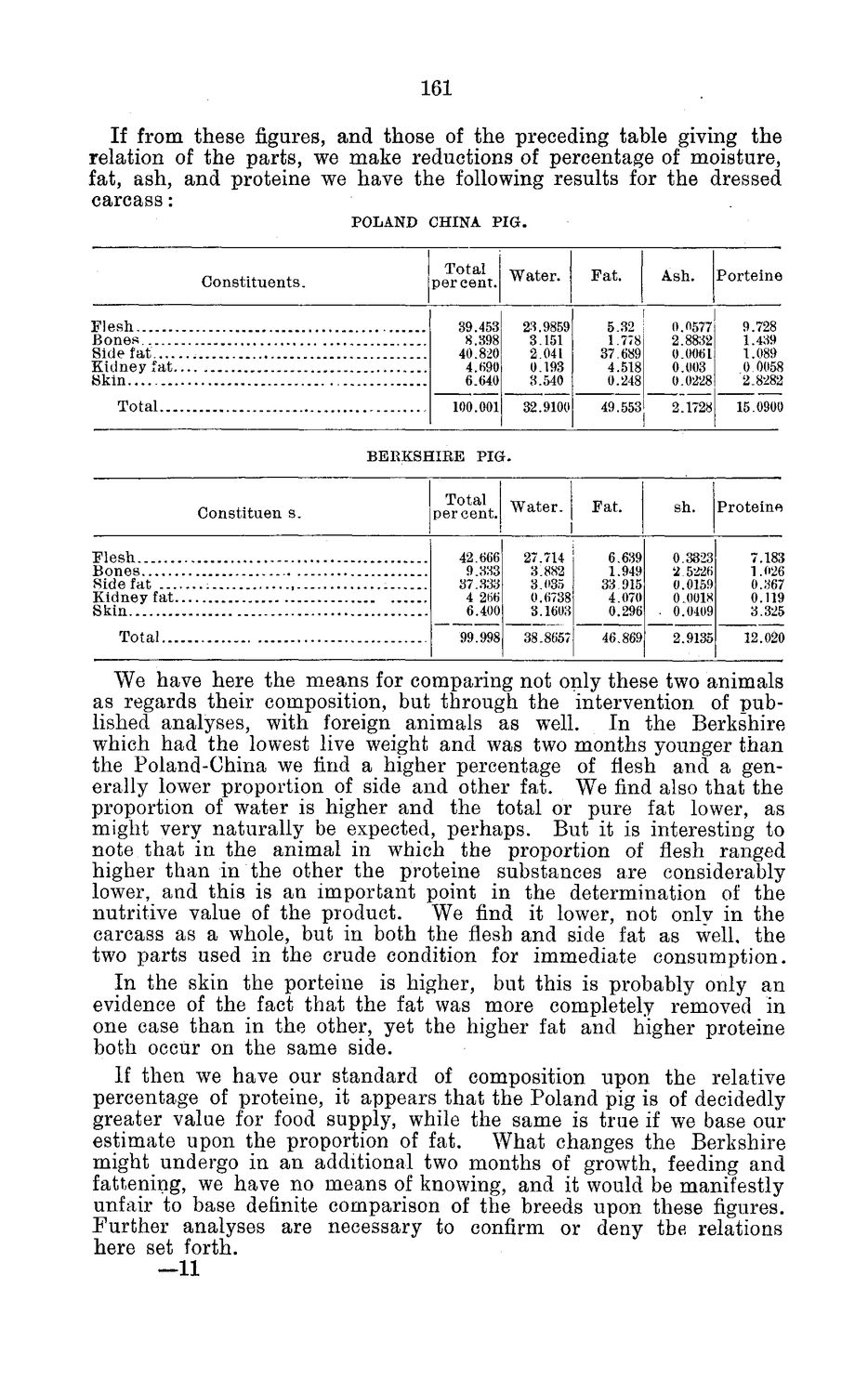Caption: Board of Trustees Minutes - 1884
This is a reduced-resolution page image for fast online browsing.

EXTRACTED TEXT FROM PAGE:
161 If from these figures, and those of the preceding table giving the relation of the parts, we make reductions of percentage of moisture, fat, ash, and proteine we have the following results for the dressed carcass: POLAND CHINA P I G . Total p e r c e n t . Water. 39.453 8.398 40.820 4.690 6.640 100.001 BERKSHIEE PIG. Fat. 6.639 1.949 33 915 4.070 0.296 46.869 sh. Proteine 7.183 1.026 0.367 0.119 3 325 12.020 23.9859 3.151 2.041 0.193 3.540 32.9100 Constituents. Flesh Side fat K i d n e y Tat Skin Total Fat. 5.32 1.778 37.689 4.518 0.248 49.553 Ash. 0.0577 2.8832 0.0061 0.003 0.0228 2.1728 Porteine 9.728 1.439 1.089 0 0058 2 8282 15 0900 C o n s t i t u e n s. Flesh Bones Side fat Skin Total Total percent. Water. 42.666 9.333 37.333 4 256 6.400 99.998 27.714 3.882 3.035 0.6738 3.1603 38.8657 Hill , 2.9135 We have here the means for comparing not only these two animals as regards their composition, but through the intervention of published analyses, with foreign animals as well. In the Berkshire which had the lowest live weight and was two months younger than the Poland-China we find a higher percentage of flesh and a generally lower proportion of side and other fat. We find also that the proportion of water is higher and the total or pure fat lower, as might very naturally be expected, perhaps. But it is interesting to note that in the animal in which the proportion of flesh ranged higher than in the other the proteine substances are considerably lower, and this is an important point in the determination of the nutritive value of the product. We find it lower, not only in the carcass as a whole, but in both the flesh and side fat as well, the two parts used in the crude condition for immediate consumption. In the skin the porteine is higher, but this is probably only an evidence of the fact that the fat was more completely removed in one case than in the other, yet the higher fat and higher proteine both occur on the same side. If then we have our standard of composition upon the relative percentage of proteine, it appears that the Poland pig is of decidedly greater value for food supply, while the same is true if we base our estimate upon the proportion of fat. What changes the Berkshire might undergo in an additional two months of growth, feeding and fattening, we have no means of knowing, and it would be manifestly unfair to base definite comparison of the breeds upon these figures. Further analyses are necessary to confirm or deny the relations here set forth. —11
|